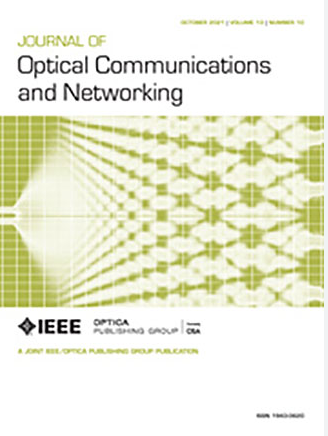AlarmGPT:使用生成式预训练变换器的光网络智能警报分析器
IF 4
2区 计算机科学
Q1 COMPUTER SCIENCE, HARDWARE & ARCHITECTURE
引用次数: 0
摘要
光网络的蓬勃发展扩大了网络范围,并导致设备部署量相应增加。这种增长可能会在设备出现故障或光纤断裂时产生大量警报。高效、准确地管理这些警报一直是研究和工业界关注的重要问题。警报处理工作流程通常包括过滤、分析和诊断阶段。在当前的光网络中,这些程序通常由经验丰富的工程师利用专业知识和丰富经验来完成。这种方法需要大量的人力资源和时间,以及苛刻的熟练前提条件。为了解决这个问题,我们提出了一种用于光网络的智能警报分析助手 "AlarmGPT",它利用了生成式预训练变换器(GPT)和 LangChain。所提出的 AlarmGPT 对告警数据具有高水平的语义理解和上下文感知能力,大大提高了模型解释、分类和解决告警事件的能力。通过对从实际光传输网络(OTN)中收集的大量告警数据进行验证,AlarmGPT 在告警知识问答、告警压缩、告警优先级分析和告警诊断等任务中的可用性得到了验证。这种方法有可能大大减少警报处理所需的人力和时间,同时降低网络操作员的经验要求。本文章由计算机程序翻译,如有差异,请以英文原文为准。
AlarmGPT: an intelligent alarm analyzer for optical networks using a generative pre-trained transformer
The proliferating development of optical networks has broadened the network scope and caused a corresponding rise in equipment deployment. This growth potentially results in a significant number of alarms in the case of equipment malfunctions or broken fiber. Managing these alarms efficiently and accurately has always been a critical concern within the research and industry community. The alarm processing workflow typically includes filtration, analysis, and diagnostic stages. In current optical networks, these procedures are often performed by experienced engineers, utilizing their expert knowledge and extensive experience. This method requires considerable human resources and time, as well as demanding proficiency prerequisites. To address this issue, we propose an intelligent alarm analysis assistant, “AlarmGPT,” for optical networks, utilizing a generative pre-trained transformer (GPT) and LangChain. The proposed AlarmGPT exhibits a high level of semantic comprehension and contextual awareness of alarm data, significantly enhancing the model’s ability of interpreting, classifying, and solving alarm events. Through verification of extensive alarm data collected from real optical transport networks (OTNs), the usability of AlarmGPT has been validated in the tasks of alarm knowledge Q&A, alarm compression, alarm priority analysis, and alarm diagnosis. This method has the potential to significantly reduce the labor and time required for alarm processing, while also lowering the experiential requisites incumbent upon network operators.
求助全文
通过发布文献求助,成功后即可免费获取论文全文。
去求助
来源期刊
CiteScore
9.40
自引率
16.00%
发文量
104
审稿时长
4 months
期刊介绍:
The scope of the Journal includes advances in the state-of-the-art of optical networking science, technology, and engineering. Both theoretical contributions (including new techniques, concepts, analyses, and economic studies) and practical contributions (including optical networking experiments, prototypes, and new applications) are encouraged. Subareas of interest include the architecture and design of optical networks, optical network survivability and security, software-defined optical networking, elastic optical networks, data and control plane advances, network management related innovation, and optical access networks. Enabling technologies and their applications are suitable topics only if the results are shown to directly impact optical networking beyond simple point-to-point networks.

 求助内容:
求助内容: 应助结果提醒方式:
应助结果提醒方式:


